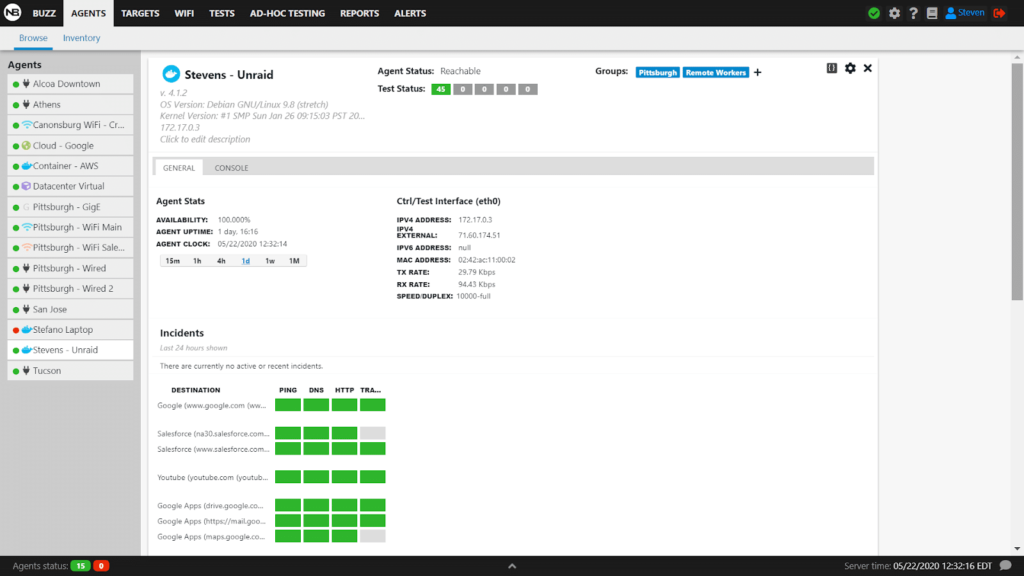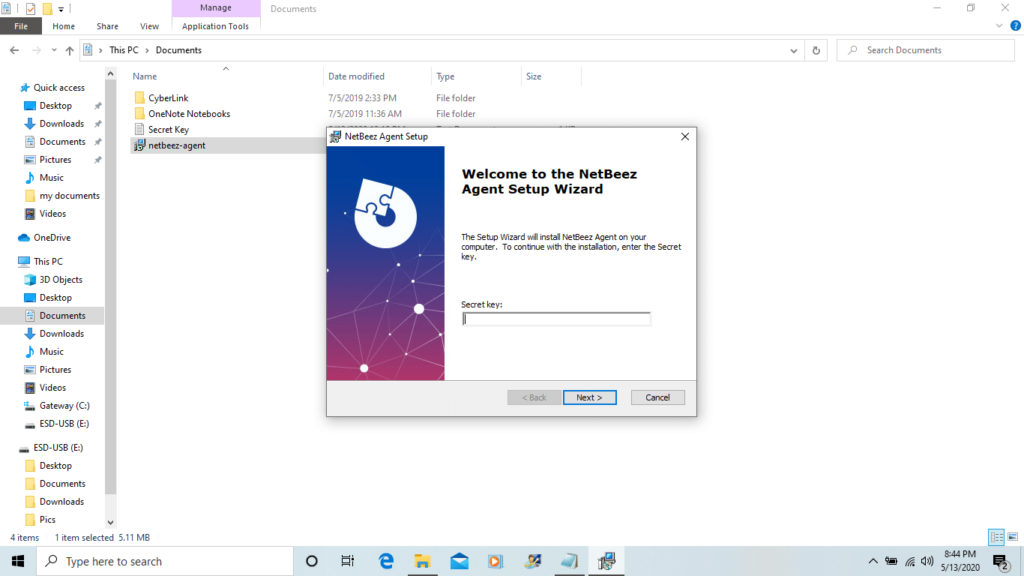Why did we develop a Remote Workers Agent?
COVID-19 came full swing in the US in the middle of March of 2020. We were suddenly bombarded with requests such as, “How do we use NetBeez to troubleshoot VPN issues” and “My boss says blaming my ISP for network issues is no good without the data to prove it”. Our customers wanted to know how NetBeez could help them with these issues.
What we did over here at NetBeez back in March was to brainstorm a way to help our customers in supporting remote workers. We realize that even after COVID-19, the remote workers concept is here to stay in some capacity for most businesses. Most of our customers have expressed to us that many roles within their company do not expect to even have conversations regarding returning to the office until 2021.
How it all Started – Phase 1
During the time of COVID-19, our customer didn’t have visibility into remote workers’ network performance. We decided to streamline this process as much as possible and make it as easy as possible for our customers to test out this Proof of Concept (POC) in order to deliver as much feedback as possible.
The good news is, the POC was very successful in that it delivered all of the data that the support teams were looking for. It was like having a NetBeez agent connected to the user’s router. It also gave visibility to connectivity into VPNs and allowed them to compare performance across all users’ networks to pinpoint issues.

NetBeez screenshot of a docker agent for Windows/Mac (1st iteration of the remote workers program)
We already had the technology and even a way to deploy an agent on an end-user system. Our customers wanted a seamless way to deploy agents on a large scale without having to get approval for Docker. Docker is a 3rd party development tool and requires several levels of approvals for many larger companies. We also wanted more control of the agent itself and adding docker to the equation limited our ability to support the project entirely.
The Trials – Phase 2
We initially utilized the Docker Agent that we already had developed. We did some refining for deployment, updated documentation and met with each customer on the setup procedure. What we found out with the Docker Agent is, we have no control over the program itself, so if there are any issues with the Docker Program, we have limited ways of assisting.
We spoke internally and Panos started to develop a way to install the agent as a background process on Windows. The agent must be installed via Ubuntu, but we found that Windows 10 supports Ubuntu 16.04 and newer and is even downloadable through the Microsoft Store! We developed a way to deploy it as a background process and even automatically start on sign-in. It used far less resources and we have full control over the application. It would be easier to report bugs and fix them.
The Scaling Project – Phase 3
We have found that the Windows Agent as we call it, once deployed, works perfectly and acts like any other agent. We realized that this was the way we wanted to head with this application. This allows us to scale it to tens of thousands of users and make the installation so simple that everyday users would have no trouble installing it. But also utilizing a .MSI package, system admins can do large scale deployments as well.
We have developed an installer version that will do the entire process in a series of “next clicks” and pop ups that will require user input such as the secret key and/or name of the agent. This way, an end user can install it or system admins can push this to thousands of end users and when they start the program they will have to enter the secret key for the organizations dashboard and name the agent and it will complete installation.

Entering your secret key into the installer
Feedback – Phase 4
We will be offering all our customers a chance to do a full testing of the remote worker network monitoring service that we are offering. This should give us final feedback to make tweaks in order to match the needs of our customers. Many of the final tweaks will likely line up with our next major release in Q3 of 2020.
A new program and approach will be developed. This will require feedback from many parties including our customers, stakeholders, leadership and other internal members of NetBeez. Just like the product itself, we need to align the program and strategy to align with customer demand. It does us no good if we make the greatest product ever, if the program does not match the customer demands.
Personal Thank You from NetBeez
This project was a huge undertaking by the team. When I was brought on board in December of 2019, I had high goals and wanted to accomplish some really great things. I never expected that I would be spearheading one of our largest new developments in the history of the company. During this project, I have learned more about Linux command line, I have deployed, redeployed and broken many different elements. It has been such a fantastic learning process for me.
I have also learned so much for our customers. They have been crucial in this project as well! They have helped guide us in the right direction, giving us top quality feedback and willing to take the time with us to help us develop something out of the necessity of our customer-base. Without our customers, NetBeez would not be what we are today. You have been vital in our success and growth and we want to thank you from the bottom of our hearts!





